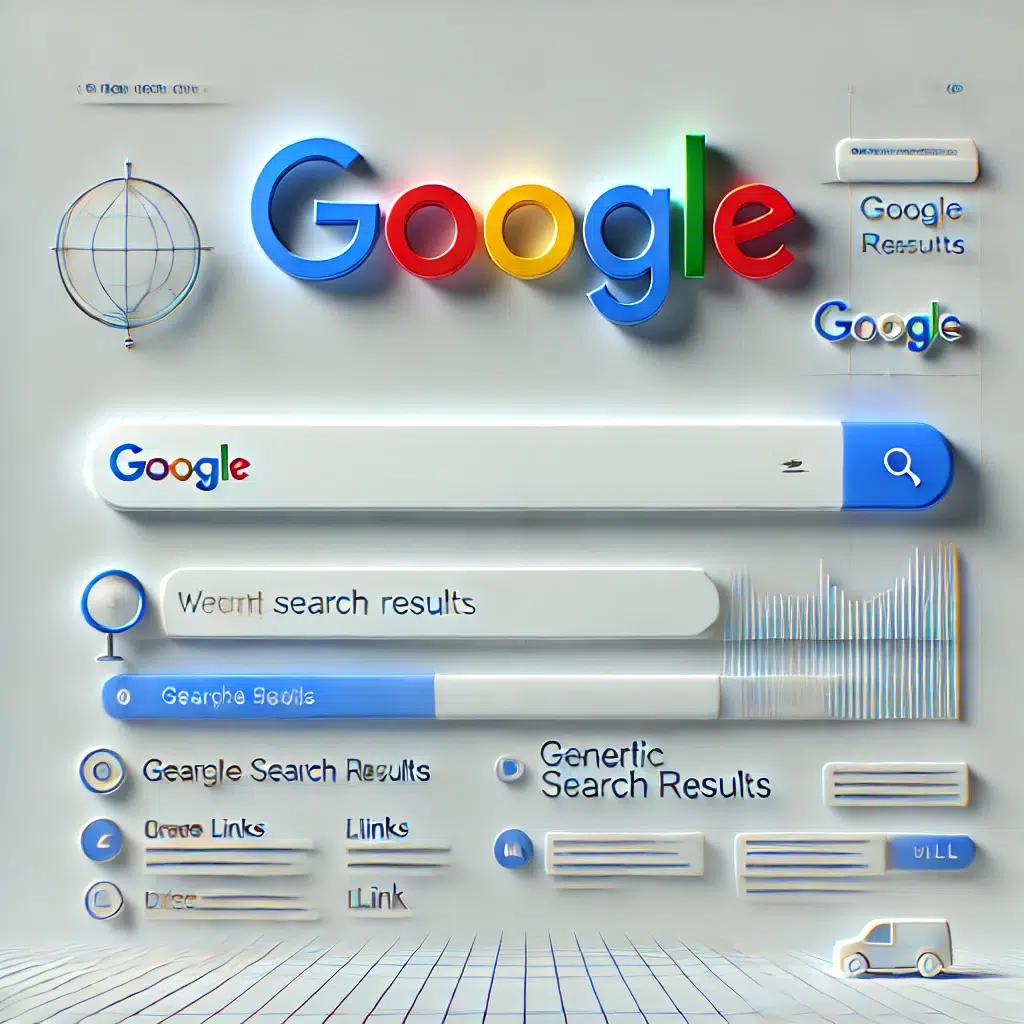
 Google Search operates using an intricate system designed to index, rank, and deliver the most relevant information from the web. Here’s an overview of how it works:
Google Search operates using an intricate system designed to index, rank, and deliver the most relevant information from the web. Here’s an overview of how it works:
1. Crawling
Google uses automated programs called web crawlers (or Googlebots) to discover and scan web pages. These crawlers navigate the web by following links between pages. When a new page is created, or an existing one is updated, the crawlers revisit to collect the latest version.
Key points:
- Crawlers look for publicly accessible pages (those not blocked by a
robots.txtfile). - Crawlers focus on gathering metadata, links, and content.
2. Indexing
Once pages are crawled, the data is processed and stored in Google’s search index. The index is a massive database containing billions of web pages.
What happens during indexing:
- The content of each page is analysed, including text, images, videos, and structured data.
- Keywords and context are extracted to understand what the page is about.
- Additional signals, such as language and location, are captured to improve relevance.
3. Ranking
When you search, Google ranks the indexed pages to determine the most relevant results. This ranking process involves sophisticated algorithms that consider hundreds of factors, including:
- Relevance: How well the content matches the search query.
- Quality: Authority and trustworthiness of the source, often judged by backlinks.
- Freshness: How recent or up-to-date the content is.
- User experience: Page speed, mobile-friendliness, and ease of navigation.
- Search intent: Whether the content satisfies the specific query type (e.g., informational, navigational, or transactional).
4. Delivering Results
Google presents the search results in a well-organised format, which may include:
- Organic results: Links to web pages ranked based on relevance and quality.
- Featured snippets: Highlighted answers at the top of the page for quick information.
- Knowledge panels: Rich, fact-based information boxes (e.g., about a person or topic).
- Images, videos, and news: Results tailored to the query type.
- Local results: Information about nearby businesses or services.
5. Continuous Improvement
Google continuously refines its algorithms to improve search results:
- Machine learning: Enhances understanding of complex queries.
- User feedback: Tracks clicks, time spent on pages, and other behaviour to adjust rankings.
- Core updates: Periodic changes to improve the overall search experience.
In short, Google Search works by:
- Discovering content (crawling).
- Storing it in an organised database (indexing).
- Ranking it based on algorithms (ranking).
- Presenting the best matches to your query (results).
While Google is a powerful tool with numerous benefits, it also has disadvantages. Here are some key drawbacks:
1. Privacy Concerns
Google collects vast user data through its services (Search, Gmail, Maps, etc.). This raises concerns about:
- Surveillance: Continuous tracking of user activities across platforms and devices.
- Data security: Risk of data breaches or misuse.
- Personalisation: While convenient, it can create “filter bubbles,” limiting exposure to diverse viewpoints.
2. Monopoly Power
Google’s dominance in search (over 90% market share) gives it significant control over:
- Online advertising: Many businesses rely heavily on Google Ads, often facing high costs.
- Search results: Critics argue that Google can manipulate results to prioritise its services (e.g., YouTube, Maps).
- Innovation suppression: Its dominance can discourage competition and innovation in tech.
3. Bias in Search Results
Google’s algorithms, while advanced, are not immune to bias. This can lead to:
- Skewed information: Results that favour popular or well-funded sources over smaller, niche ones.
- Censorship: Some content may be de-prioritised or removed due to regulatory or corporate pressures.
- Echo chambers: Personalisation algorithms may reinforce pre-existing beliefs by showing users more of what they already agree with.
4. Dependence and Over-reliance
Many individuals and businesses rely heavily on Google for:
- Search: Dependence on a single source can limit the exploration of alternatives.
- Advertising: Businesses that depend solely on Google Ads may suffer if their accounts are suspended.
- Tools: Organisations tied to Google Workspace (Gmail, Drive, etc.) face risks if these services experience outages.
5. Advertising-Driven Model
Google’s primary revenue source is advertising, which has led to:
- Ad prioritisation: Paid ads often take precedence over organic search results, sometimes reducing the visibility of non-ad content.
- Misleading ads: Not all ads are trustworthy, which can expose users to scams or low-quality services.
- Over-commercialisation: Search results may become saturated with commercial content, making it harder to find unbiased information.
6. Environmental Impact
Google’s massive data centres consume enormous amounts of energy:
- Carbon footprint: Despite efforts to use renewable energy, the environmental cost of running Google’s infrastructure is significant.
- E-waste: Frequent upgrades to hardware and technology contribute to global e-waste.
7. Limited Transparency
Google’s algorithms and decision-making processes are primarily opaque:
- Algorithm changes: Updating ranking algorithms can negatively impact websites without clear explanations.
- Content moderation: Decisions about what content is removed or promoted are often unclear and controversial.
8. Educational and Social Drawbacks
- Surface-level understanding: Quick access to information may discourage deep learning or critical thinking.
- Addiction: Overuse of Google services, like YouTube or Search, can contribute to screen addiction and reduced productivity.
9. Regional Limitations
Google does not operate fully in some countries (e.g., China) due to government restrictions, and:
- Censorship: Governments may influence what information is accessible through Google in their regions.
- Accessibility issues: Certain services may be unavailable or limited in less-developed areas.
Despite these disadvantages, Google plays a vital role in modern life. Therefore, users must be aware of these challenges and use Google wisely.


